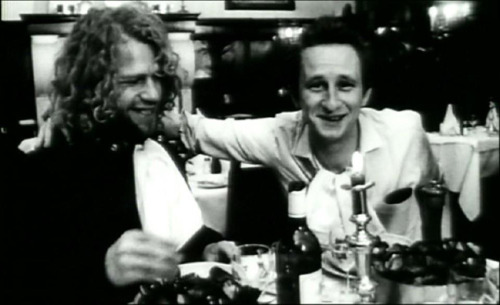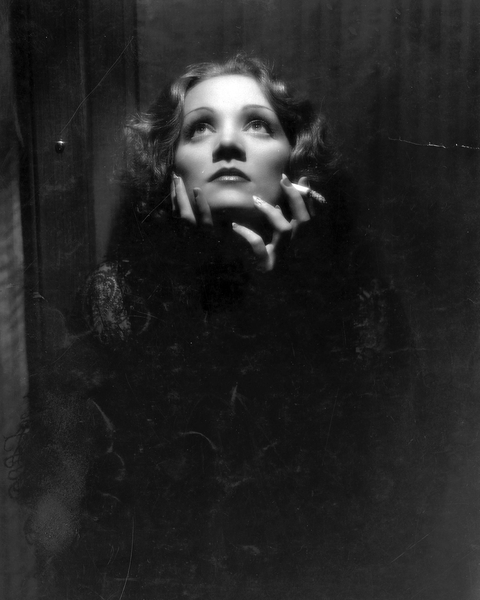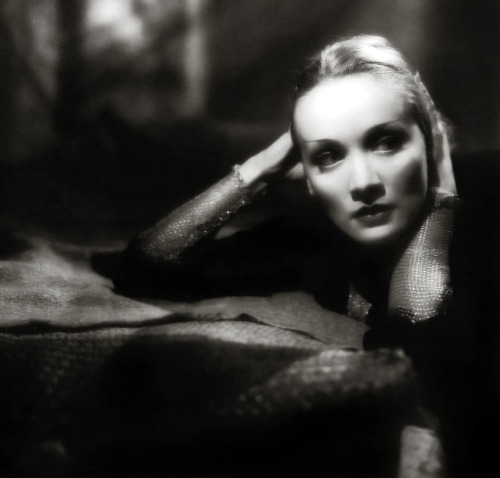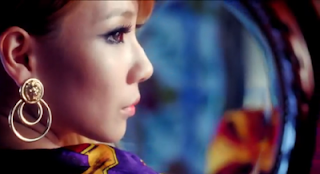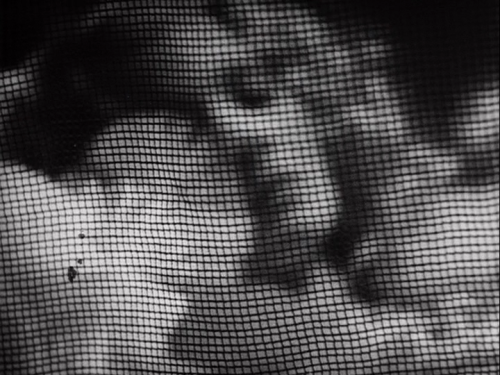After spending some time watching and researching the prose-to-screen adaptations directed by Wojciech Has, I decided to write about Has’s collaborations with author Stanislaw Dygat: 1958’s Farewells (Partings, Lydia Ate the Apple, Pożegnania) and 1959’s One-Room Tenants (Wspólny pokój). I’ll also compare these adaptations with another adaptation of Dygat’s work: the 1967 Janusz Morgenstern film Jowita. These titles are all studies of society under pressure, defined by spaces and a particular time.
Sunday, March 6, 2016
#22: Farewells and One-Room Tenants: the Stanislaw Dygat - Wojciech Has partnership
After spending some time watching and researching the prose-to-screen adaptations directed by Wojciech Has, I decided to write about Has’s collaborations with author Stanislaw Dygat: 1958’s Farewells (Partings, Lydia Ate the Apple, Pożegnania) and 1959’s One-Room Tenants (Wspólny pokój). I’ll also compare these adaptations with another adaptation of Dygat’s work: the 1967 Janusz Morgenstern film Jowita. These titles are all studies of society under pressure, defined by spaces and a particular time.
Friday, November 27, 2015
#21: After Creation: genre television of the 2010's
 |
| picture source |
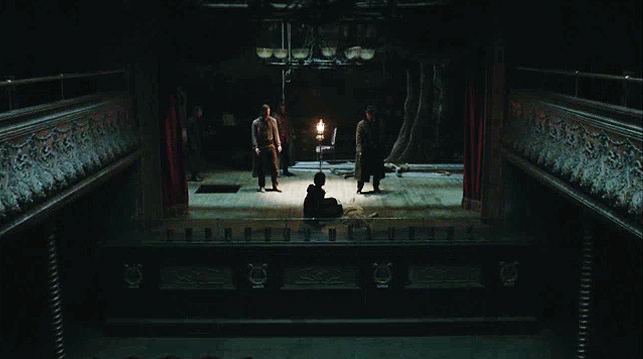 |
| picture source |
As the post comparing the two shows remained incomplete, I noticed similar themes appear in other other genre (or "genre-leaning") television. In Penny Dreadful, True Detective's first season, Orphan Black, Äkta människor (Real Humans), Sky Atlantic's Fortitude, as well as the shows covered in this previous post (Utopia, Les revenants, and the first season of Hannibal); characters ponder the circumstances of their own existence. At what point did things turn wrong? How much of it is due to themselves, their upbringing, or current surroundings? Were they doomed at creation?
(spoilers under the cut)
Thursday, June 12, 2014
#20: Soldiers of Future Past: Marvel superheroes vs. American security measures


Posters by Paolo Rivera and Ben Whitesell.
"This isn't freedom. This is fear."
Two of this year's movies with Marvel superheroes feature men displaced from their time, fighting against extreme preventive security systems: Captain America: The Winter Soldier (Marvel Studios) and X-Men: Days of Future Past (20th Century Fox). The former hearkens to the paranoid mood of '70's conspiracy thrillers (furthered by casting Robert Redford in a key role), while the latter actually travels between 1973 and a bleak near-future. Both adapt older comic book storylines and feature a destructive climax set right in Washington, D.C (including major occurrences in the Potomac). Though blockbusters (like all other groups of movies) vary in cinematic merit, they often respond to popular needs for escapism and hope while confronting more-or-less disguised modern fears. The conflicted mood of the American 1970's lives on in these speculative struggles for hearts and minds.
Friday, August 30, 2013
#19: By the Flashbulb's Bright Glare: Ace in the Hole (1951) and Sweet Smell of Success (1957)

-large-cover.png)
Ace in the Hole (directed by Billy Wilder) and Sweet Smell of Success (directed by Alexander Mackendrick) were brought to 1950’s screens by A-list talent, many of whom were hounded or haunted by the blacklist. These films’ vile protagonists wield quips and cunning as acid-tipped daggers in wars of influence. We are taken to locales of American legend: the Wild West and The Big Apple, where individuals became heroes and communities arose from dust and squalor. Yet New Mexico’s and New York’s caves and canyons are where these characters of ambition come to dupe or be duped, where care becomes a carnival. Born from the land of opportunity, these pictures drip with cynicism and self-disgust, enduring as two of the nastiest Hollywood creations made from and against the media machine.




- - -
P.S. Make it a triple feature with Wilder's Sunset Boulevard as a starter!
P.P.S. I also wrote a post about my five favorite classic cinematographers (including Success' James Wong Howe) at YAM-Mag, and posted some favorite TV and movie soundtrack tracks in this Youtube playlist.
Thursday, May 9, 2013
#18: Sinister Nature: Hannibal, Utopia, and Les Revenants (The Returned)
Three gorgeous and compelling “genre” TV shows exhibit extraordinary elements irreparably transforming ordinary worlds: Canal+’s enigmatic zombie drama Les Revenants (titled The Returned for the UK), Channel 4’s conspiracy thriller Utopia, and AXN/Gaumont/NBC’s investigative procedure-serial Hannibal. Their simmering, striking style melts into substantial experiences unlike most offerings on any screen.
 |
| Top stag and later mushroom images from Cleolinda's recaps. |
Another factor that distinguishes these surreal-leaning shows from other TV programs: their original, evocative soundtracks. Moodiness and odd flourishes heighten scenes with tones ranging from ethereal to menacing. My favorite track this year is “Meditative Chaos,” featuring the voice of Kim Neundorf, from Cristobal Tapia de Veer’s distortion-heavy Utopia soundtrack. Scottish post-rock band Mogwai composed atmospheric tracks like “Wizard Motor” for Les Revenants by watching scenes with some English-language description and translation before scoring. Brian Reitzell’s soundtrack for Hannibal sneaks and slithers before heavy beats and many an operatic crescendo. Pulses echo the ticks of a metronome, or a stalker’s steps.
Humanity is haunted and hunted. Scattered through these shows are the dream-stag and murder displays of Hannibal, Mr. Rabbit and the illustrations in Utopia, and the titular animal and human Revenants. Powerful images and personalities are presented as more than human, breaking past the civilized everyday into realms aligned with the primitive or supernatural. Living and dead, flora and fauna, blend in inhuman assemblage. Lines between opposing forces split and fuse in a kaleidoscopic array of allegiance and morality. Particular shots further suggest a further melding of diabolical and divine.
What is surprising about these shows is how they extend this dissolving duality to the basic physical and filial elements of existence. Inserts of gentle, pastoral nature are later revealed as omens of murder and decay. From Utopia’s pharma-food conspiracy to the cannibalistic killers of Hannibal and Les Revenants (and stirrings of feral behavior in the zombies of the latter), the vital and personal act of eating is tainted. Kinship bonds arise through cannibalism and trauma in Hannibal, mourning and survival in Les Revenants, and alternating paranoia and vulnerability in Utopia. Each program centers on survival through formation and fracture of individual and group identity. Yet which of these bonds are fabrications of manipulation and pressure? What bonds are genuine? Les Revenants, Utopia, and Hannibal bring to our screens three narratives that explore the hopes and fears of trust: in others, in oneself, and in one’s reality.
Thursday, January 10, 2013
#17: Camera as Enabler: Man Bites Dog (1992) and Chronicle (2012)
Man Bites Dog (C'est arrivé près de chez vous, "It Happened in Your Neighborhood"), directed by and starring Rémy Belvaux, André Bonzel, and Benoît Poelvoorde; unfolds through the footage of a documentary production crew who have selected a hitman as their subject. A reason for filming gruesome murders turns into an excuse for criminal collaboration.
Chronicle, directed by Josh Trank, tells its teens-with-superpowers tale through constant obsessive or automated video documentation. The joy and troubles of newfound abilities takes an Akira-lite path towards destruction.
These are ultimately stories of villains, either sympathetic or charismatic. The camera becomes another channel of power. Recording and performing for an audience amplifies the protagonists’ control (or lack of control) over life and death. Both main characters try to turn themselves into legends, to reach beyond their lower-middle-class situation and become an “apex predator.”
Neither film is subtle, and a few jumps and plot holes are more obvious because of the films’ overall tight control. Females are simply plot devices compared to the male characters. Yet the format inherently acknowledges perspective limitations. Man Bites Dog manages to be both brutal and incisive in its shocks and whiplash morbid humor. Chronicle is notable for how it expands the “found footage” subgenre by transforming the camera into eyes, an extension of self, a witness, even a spirit medium.
“Found footage” movies ask the audience to accept that not only is the fiction on screen “reality” for the characters, but that this fiction has the appearance of fact. One could say that extreme aspects reassure the viewer that what is happening on screen is not real; of course no one dies like that, of course there are no superhuman powers from outer space. However, the movies still ask, what if it is real? What would you do?
The two films discussed here explicitly show the materials “used” for shooting — low-budget film for Man Bites Dog, digital video for Chronicle— to ground their concept. More than similar films, they activate the possibilities of their format. Through most of Chronicle, many viewers hope for the better welfare and possible redemption of the character whose often hand-held perspective guides much of the movie. Man Bites Dog implicates and horrifies both viewer and filmmaker for their fascination with the sensational. At which point will a viewer decide to tag along for the ride? At which point would a viewer step back? Either way, they’re still watching.
 |
| pic source |
- - -
For further reading, check this critique of the socioeconomic dynamics in Chronicle, as well as the AV Club’s New Cult Canon post on Man Bites Dog.
ETA: A comment on the writer of Chronicle.
Sunday, December 9, 2012
#16 - 2NE1's "I Love You" MV (2012) and the films of Josef von Sternberg
Late at night, trying out different Korean music videos on cable OnDemand, I noticed something. It is not influence I'm suggesting or exemplary work I'm praising. There are simply some similarities I wanted to compare.
The four young women that comprise the pop group 2NE1 are kept separate for much of the song; lounging, searching. Their gaze is constantly angled, examining themselves or reaching elsewhere. If they face the camera, it is rarely sustained. These looks at the camera are often partly in shadow, at a diagonal, fleeting in motion, supported by shots of other members of the group, or through a mirror; sparsely distributed through the video until they climax in raid brighter-colored montage.
Outward excess is shown through a gaze both poetic and voyeuristic. One member's dance faces an empty armchair, while another is turned inward, a personal movement. There is an audience in mind, if not present. The group's usual hypersaturated palette, and extreme assemblage of high fashion would not be out of place in the casino of The Shanghai Gesture.
Josef von Sternberg was shameless in exploiting "foreign" stereotypes to create his idealized, often depraved, settings for desire. "I Love You" is from an Korean group and presumably filmed by an Asian director whose name I could not find. It uses many locations and objects exotic in design if not in use: the lighthouse shown below looks like a prop from a silent film, and one sensual gesture of brushing past hallway doors is quiet but memorable.
Many of the videos of 2NE1 are designed to create glamorous, bizarre yet fun worlds for school-age through pop-loving-adult fans. Both bodies of work strive to conjure escape in flickers, to embrace opulence and ridiculousness in impermanent forms.
As stated near the beginning, the slower songs of 2NE1 and other musical acts usually feature one or more people staring, in frames easy to mold towards whatever lyrics are being sung at the moment. What struck me about this video was how it indulged in languor.
Females in von Sternberg's films often slink and recline, and even in the relatively more realist silent The Docks of New York, key moments feature the heroine lying in bed. "I Love You" has been discussed as a typical song about obsession, another trait common to characters in von Sternberg's films. The women of 2NE1 and von Sternberg's heroines are presented lingering within their emotions, unsettled even in their dream worlds, restless but held back until the right moment for the direct gaze.
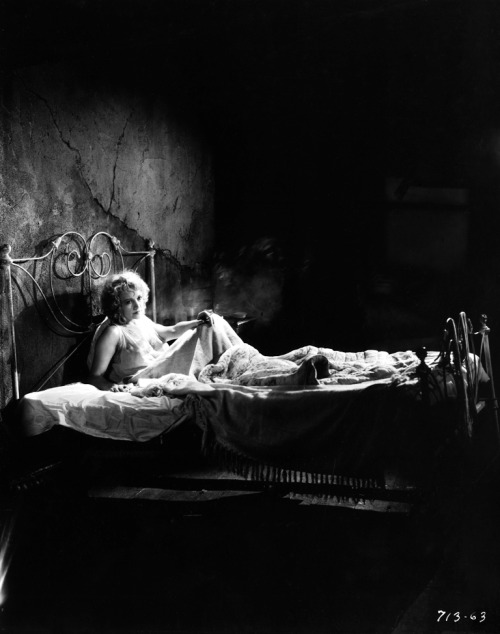
Subscribe to:
Posts (Atom)



















